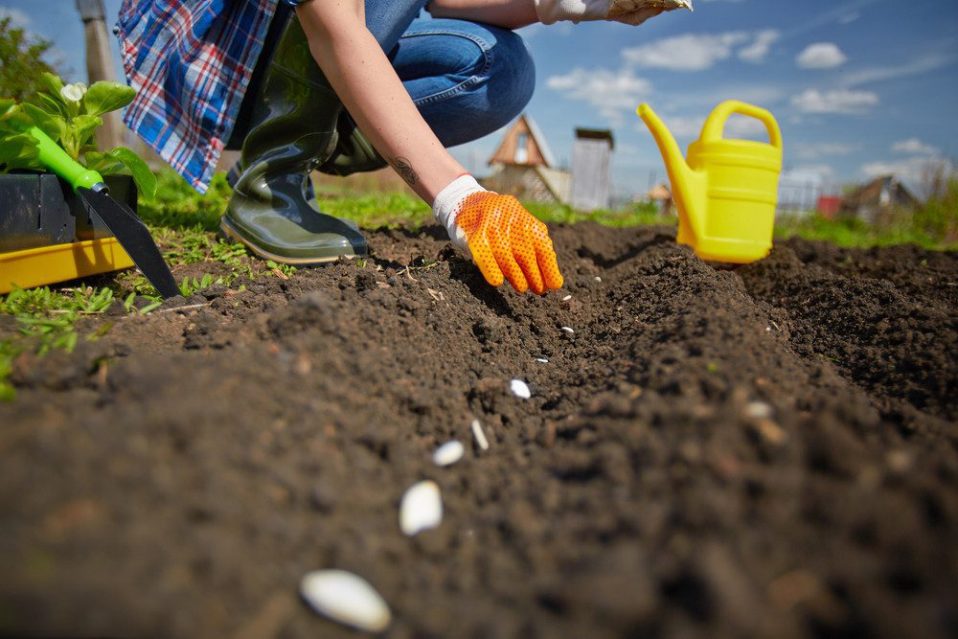Creating an outdoor family garden benefits your family with more than just healthy and organic food. As a beginner, starting a family garden requires planning, even before picking the physical area for its set-up. Since you can use the available containers as planters and improvised items to structure your garden into the desired form, decide whether to grow edible or non-edible crops that suit your needs. Before settling on the types of crops to raise, source information online on which plants do well in your area and different crop requirements. Gardening together creates healthy family bonds since you work with your children during weekends and holidays. Garden organization is fundamental as you seek to maximize the available space. Below are ideas to help you start a family garden in your backyard:
Make a Raised Garden
If you have a little space outdoors, you can choose to make raised beds and boxes to try your abilities before digging up a more extensive garden. Raised beds take up fewer areas and are easy to maintain. It is also easy to water, weed, and harvest in a raised garden.
Consider Companion Planting
Companion planting involves growing crops that help each other in various ways. Flowers, for example, attract pollinators such as bees and wasps that play a significant role in high yields. If you don’t know much about companion planting, try searching online. In the United States, 12 billion searches are conducted on the web per month, so you’ll be sure to find the information you need. Plant different crops to benefit by providing shelter, support, soil improvement, and weed control.
Use Borders and Separators
Divide your garden spaces using stones, green borders, climbing plants, or trees. Hedging and planters can also be used as dividers. Your garden layout and arrangement determine its view and its general landscape. In the U.S., 67% of landscaping projects involve single-family homes, the most popular type of home. Like many other homeowners starting landscaping projects, you can make a water fountain and creative walking paths to enhance your garden landscape.
Incorporate Bright and Bold Colors
If you want a colorful garden, invest in bright colors. Blend colors that quickly catch the attention of the passers-by. Bold colors such as red, yellow, orange, and white create beautiful scenery and add warmth to your garden. For the best appearance, paint your garden’s rocks, pathways, poles, containers, and ladders.
Plan on Essential Garden Tools
As a gardener, you will need essential garden tools for safety. Gloves protect you from blisters and excess dirt. You must purchase a wheelbarrow, shovel, rakes, hoes, and garden sprayers. The lack of these tools will make your work hard and waste time. In 2020, 228.73 million Americans owned garden equipment, as stated by statista.com. Having the right gear makes gardening enjoyable and more manageable, especially when dealing with delicate crops.
Use Unique Plant Supporters
For the climbing plants, use nice-looking supporters that have creative shapes. The beautifully-made cages, trellis, stakes, and arches keep your crops off the ground and, in turn, keep your yields clean and healthy. For long-lasting services, purchase galvanized and water-proof plant supporters.
Think of a Decorative Garden
You can choose to grow non-edible crops like flowers. Flowers boost the comfort sense and are pleasing to see and smell. In your flower garden, set up chilling family areas with sofas, simple tables, and lanterns under the shade where you can relax with your family.
Make Use of the Vertical Space
Old wooden step ladders and containers will help you in maximizing your space. Using recycled tins saves on costs since they are readily available. Planting each crop type in different containers lessens crop disease transmission and controls weeds.
Blend Edibles and Ornamentals
A mix of edibles and ornaments gives your garden a fascinating outlook. Decorations create a friendly gardening culture by using sculptures and other decorating accessories. Your garden should be simple but adventurous to walk around.
When making a family garden, prioritize your nutritional needs and choose a design that best suits you. Get helpful information from expert gardeners and put it into practice for sustainable gardening to plan every activity from planting, watering, weeding, mulching, and harvesting.





